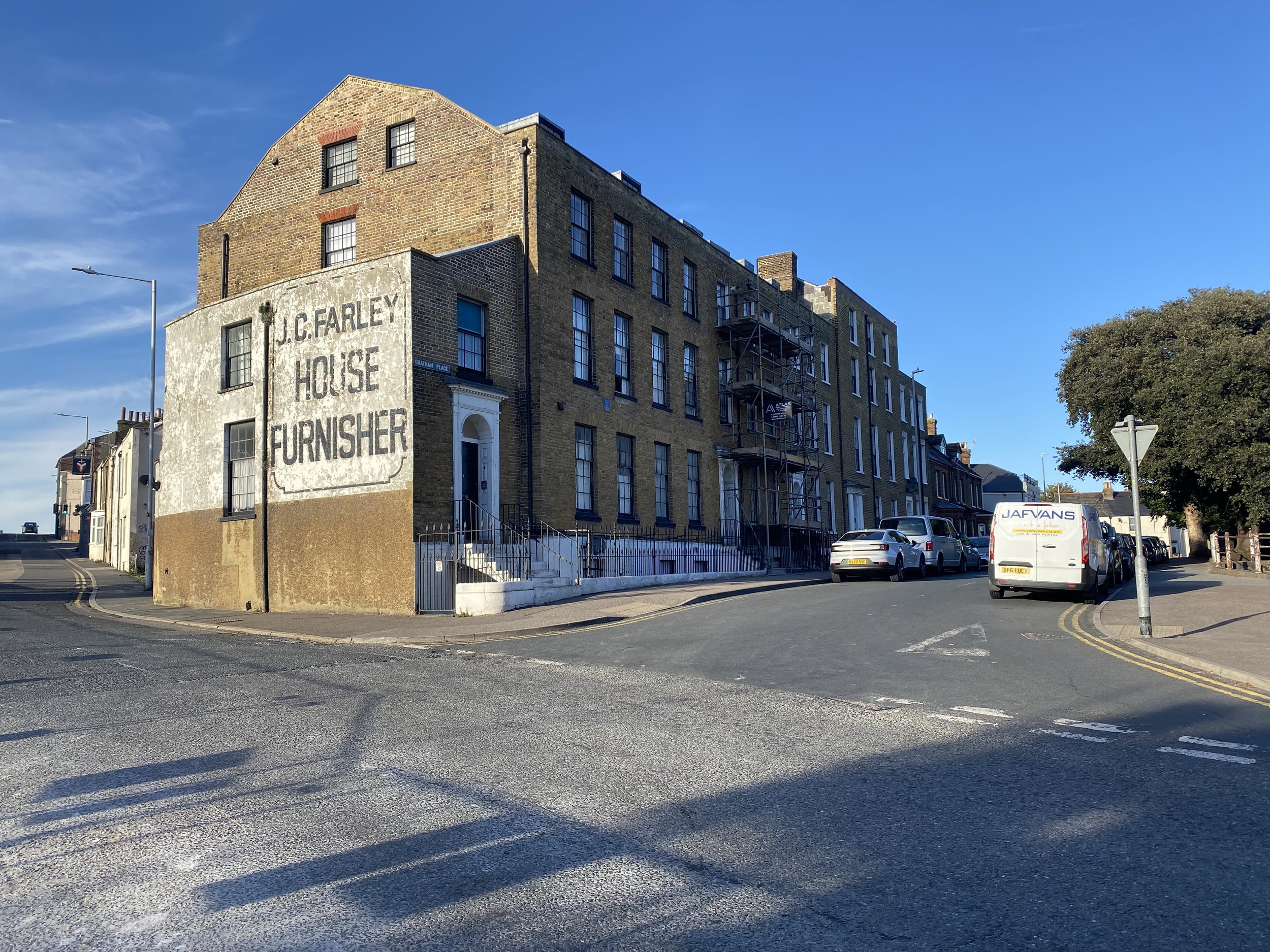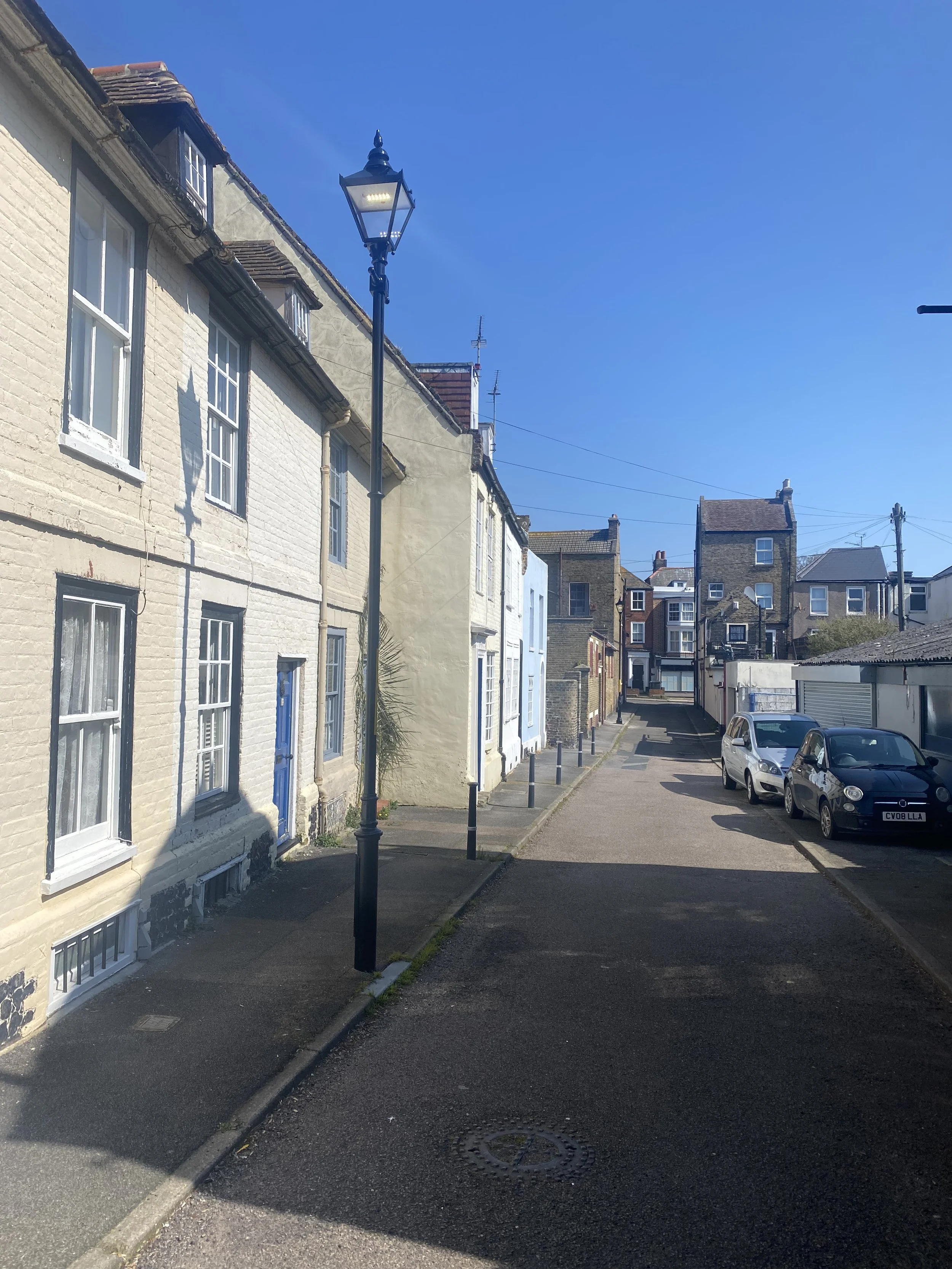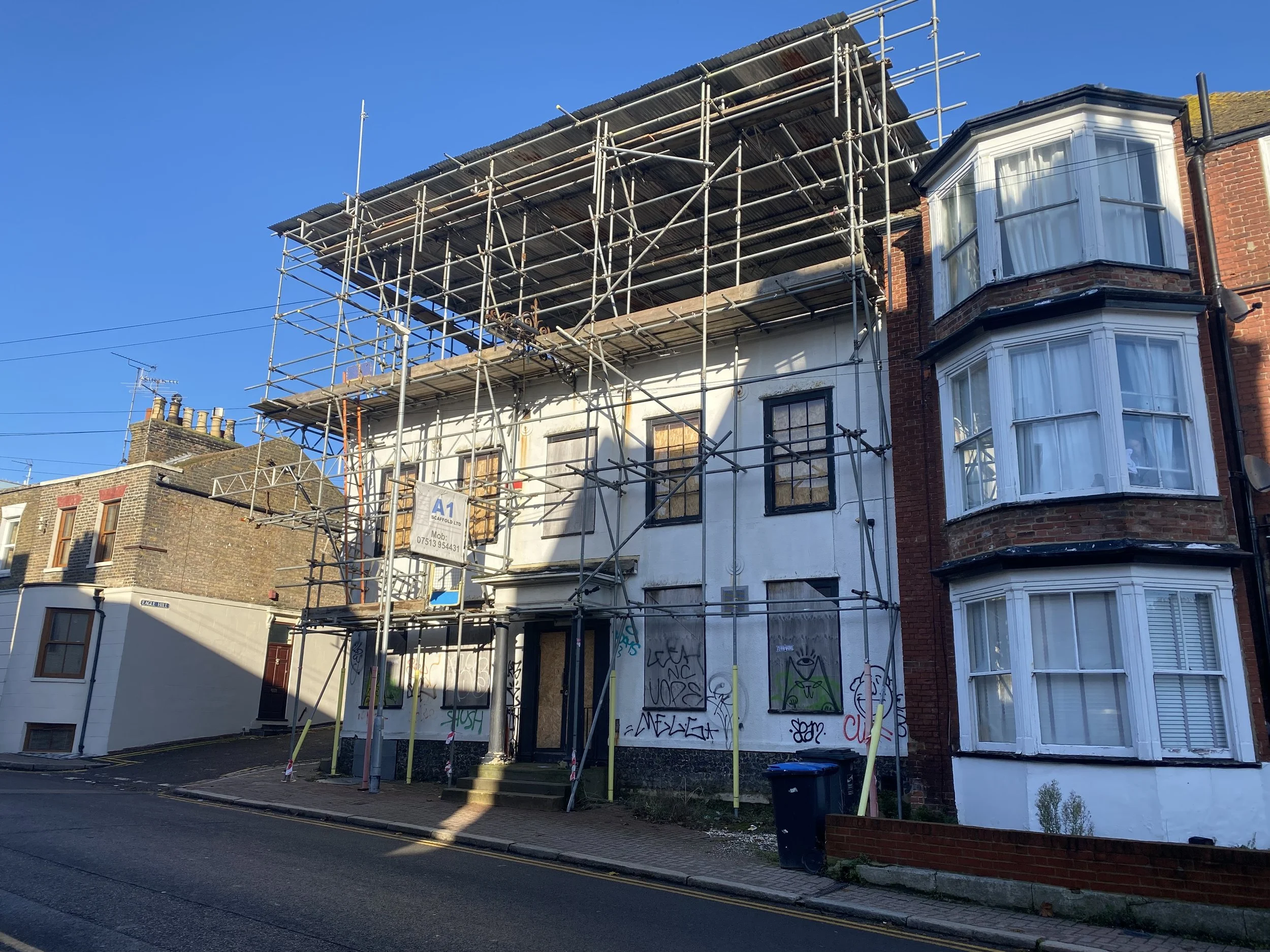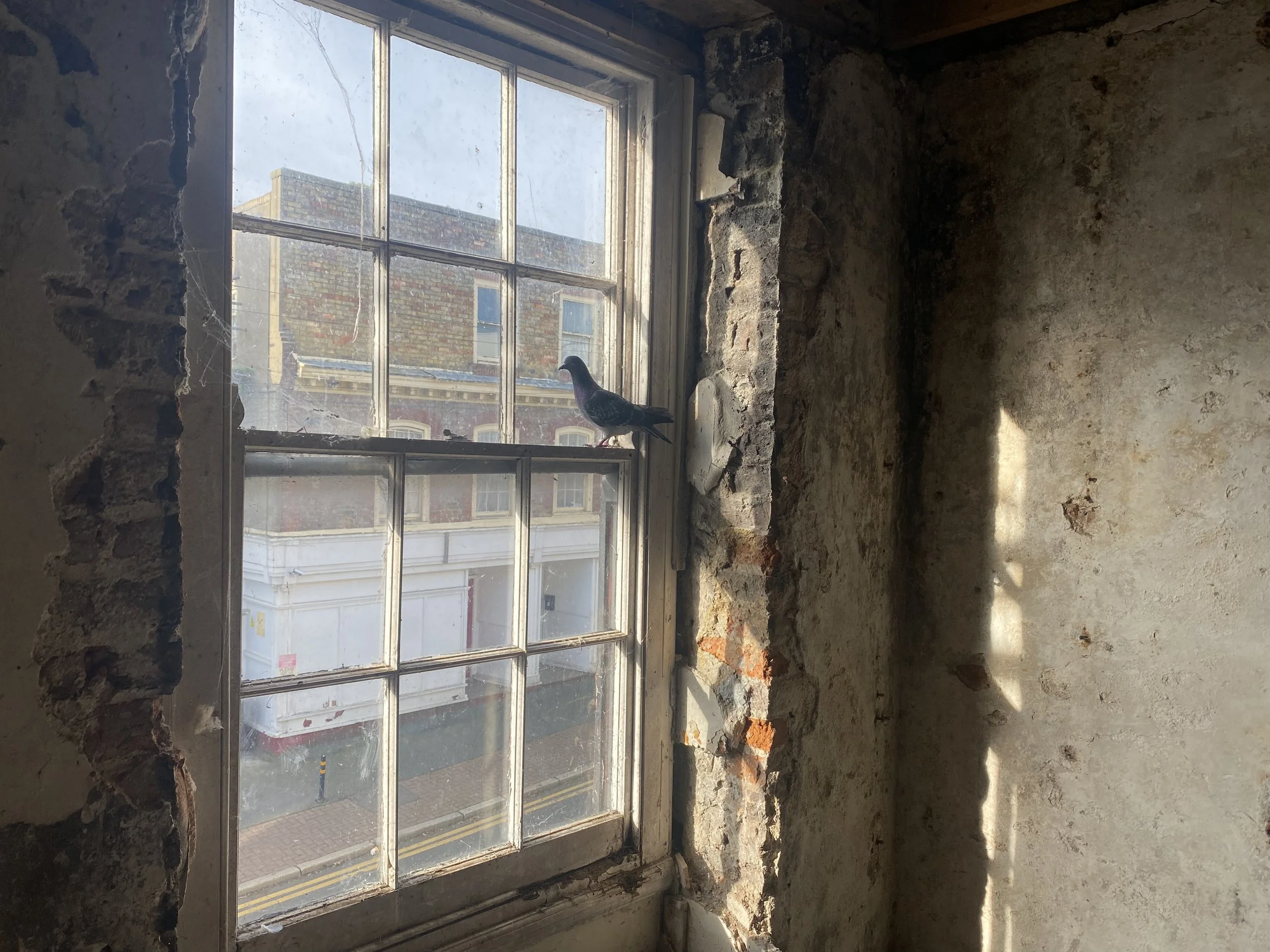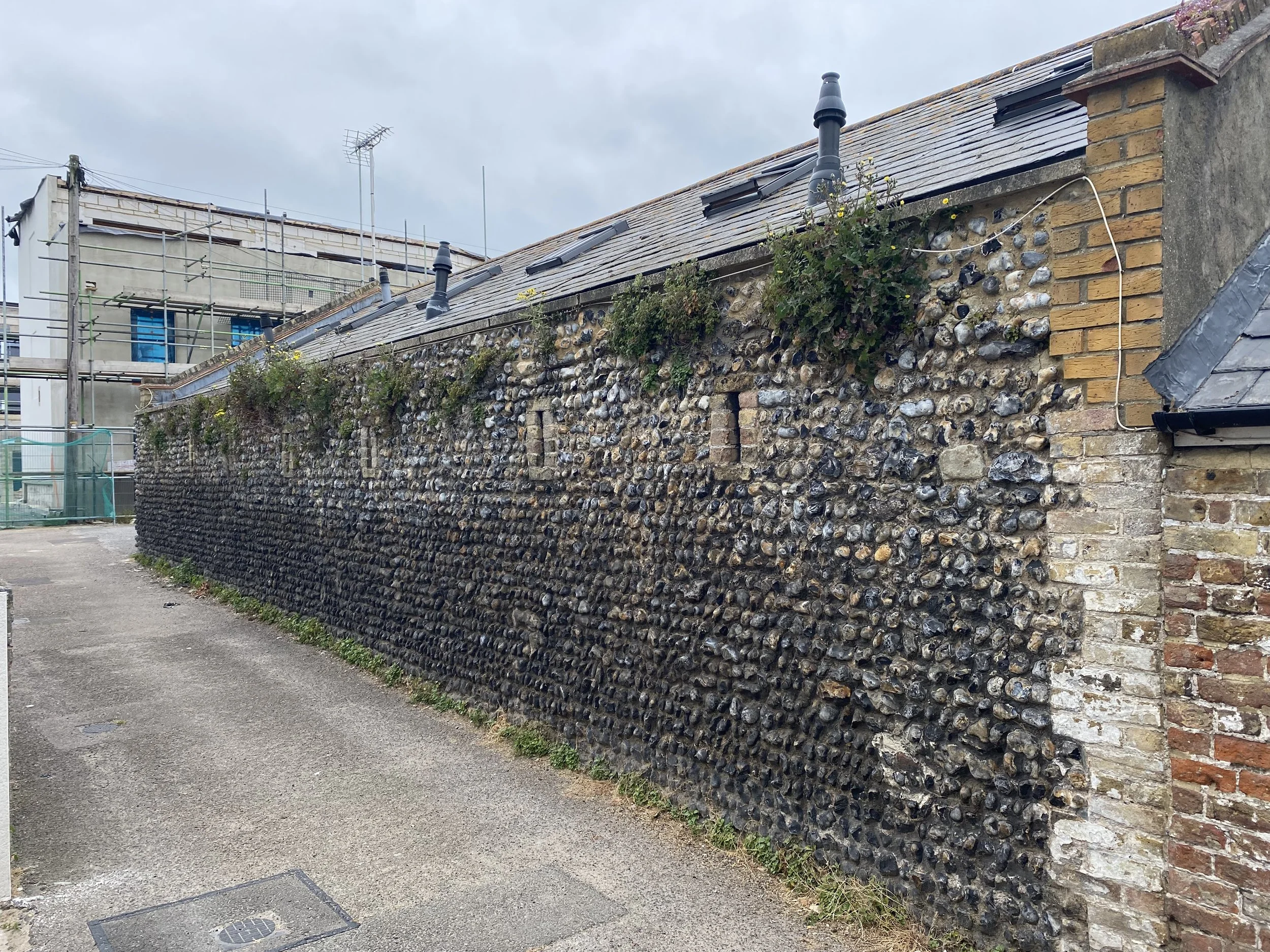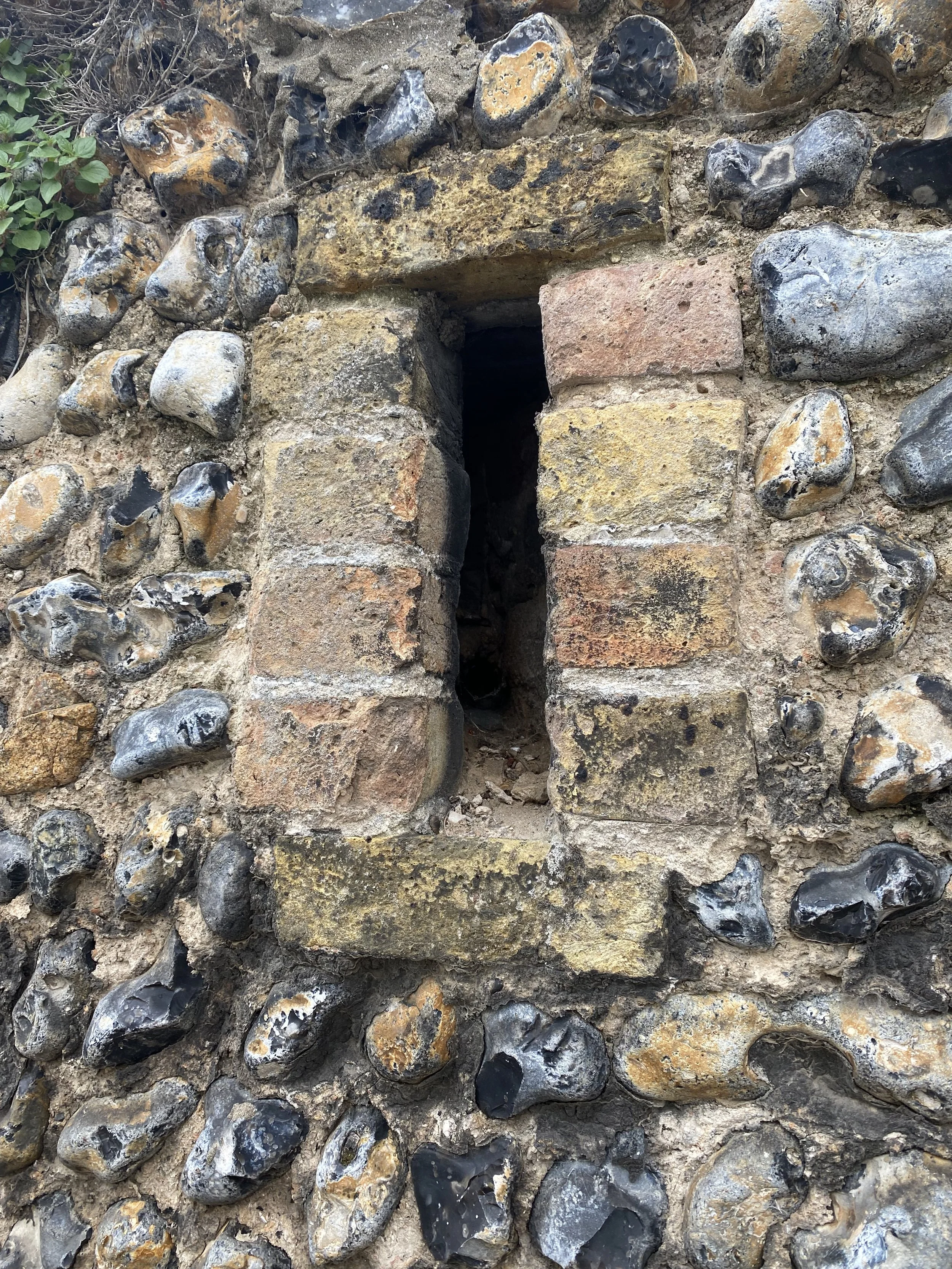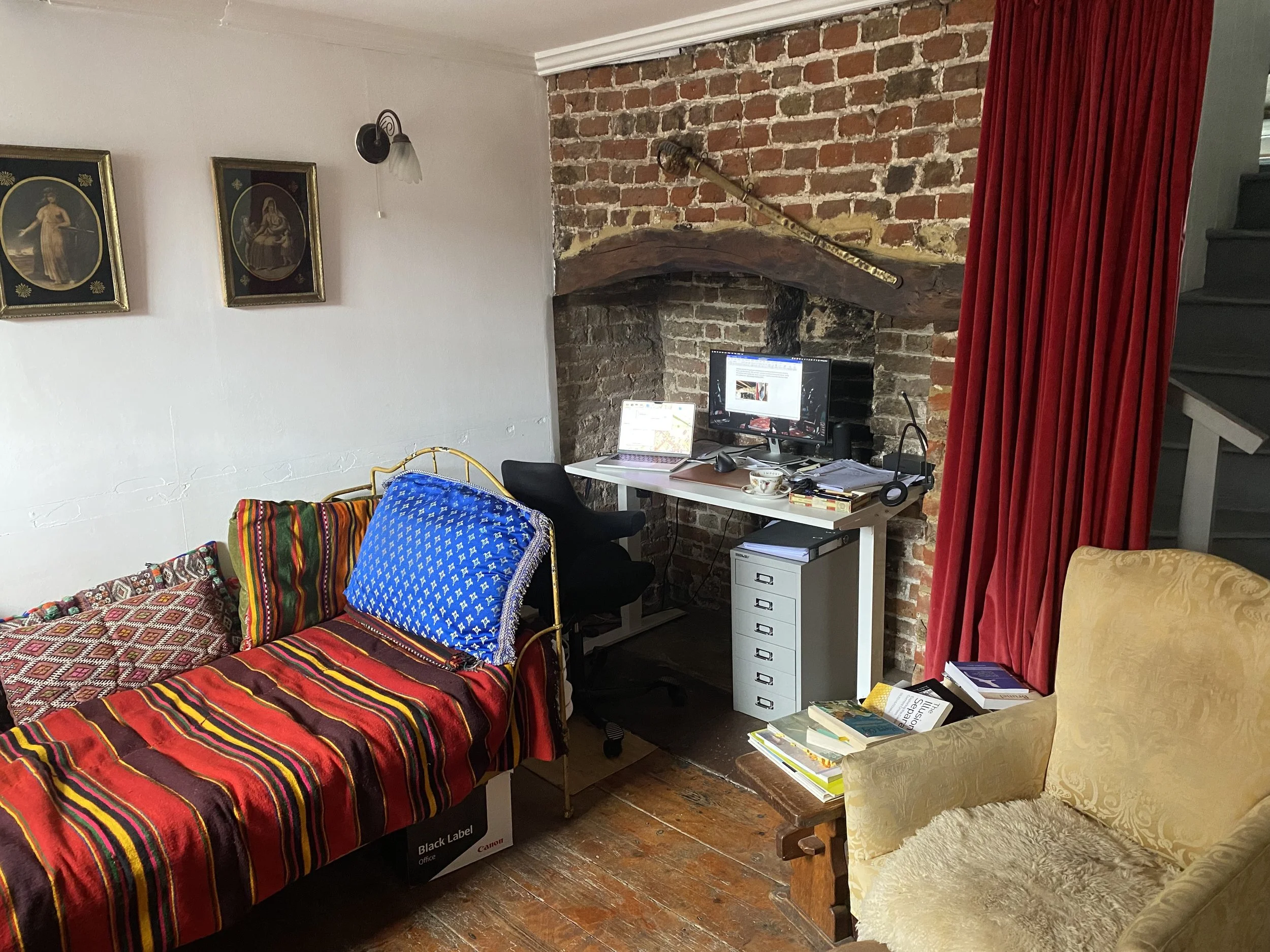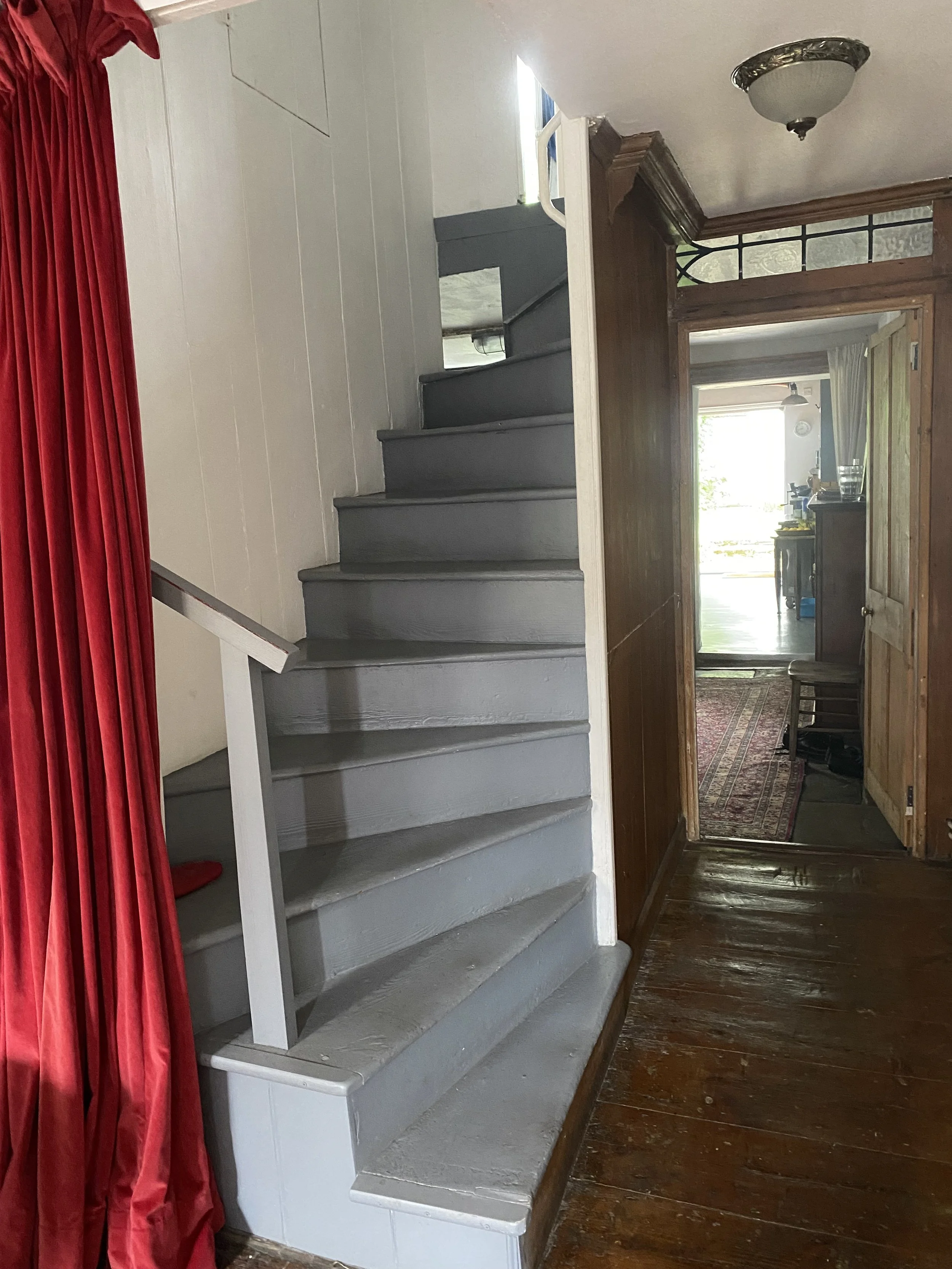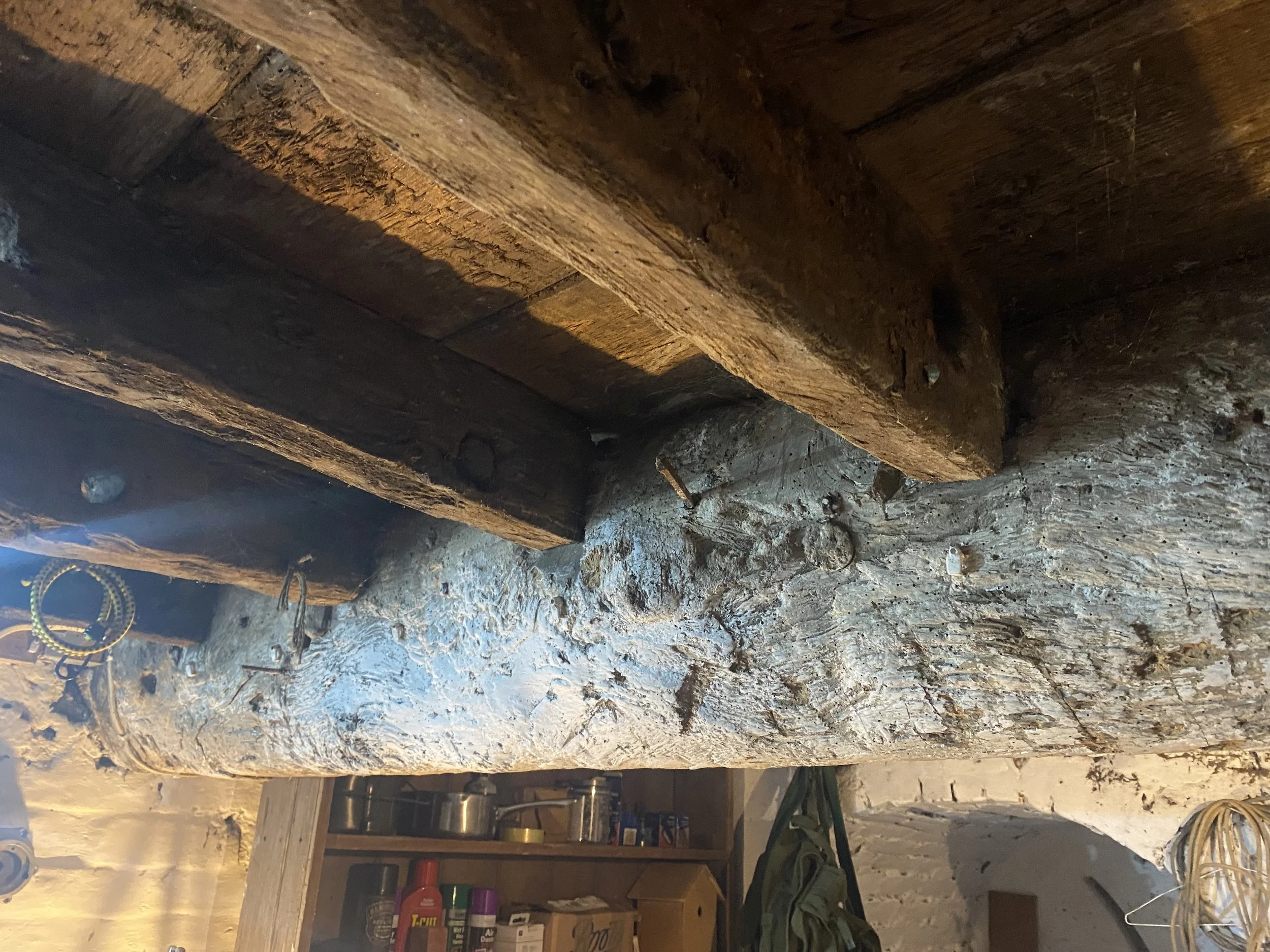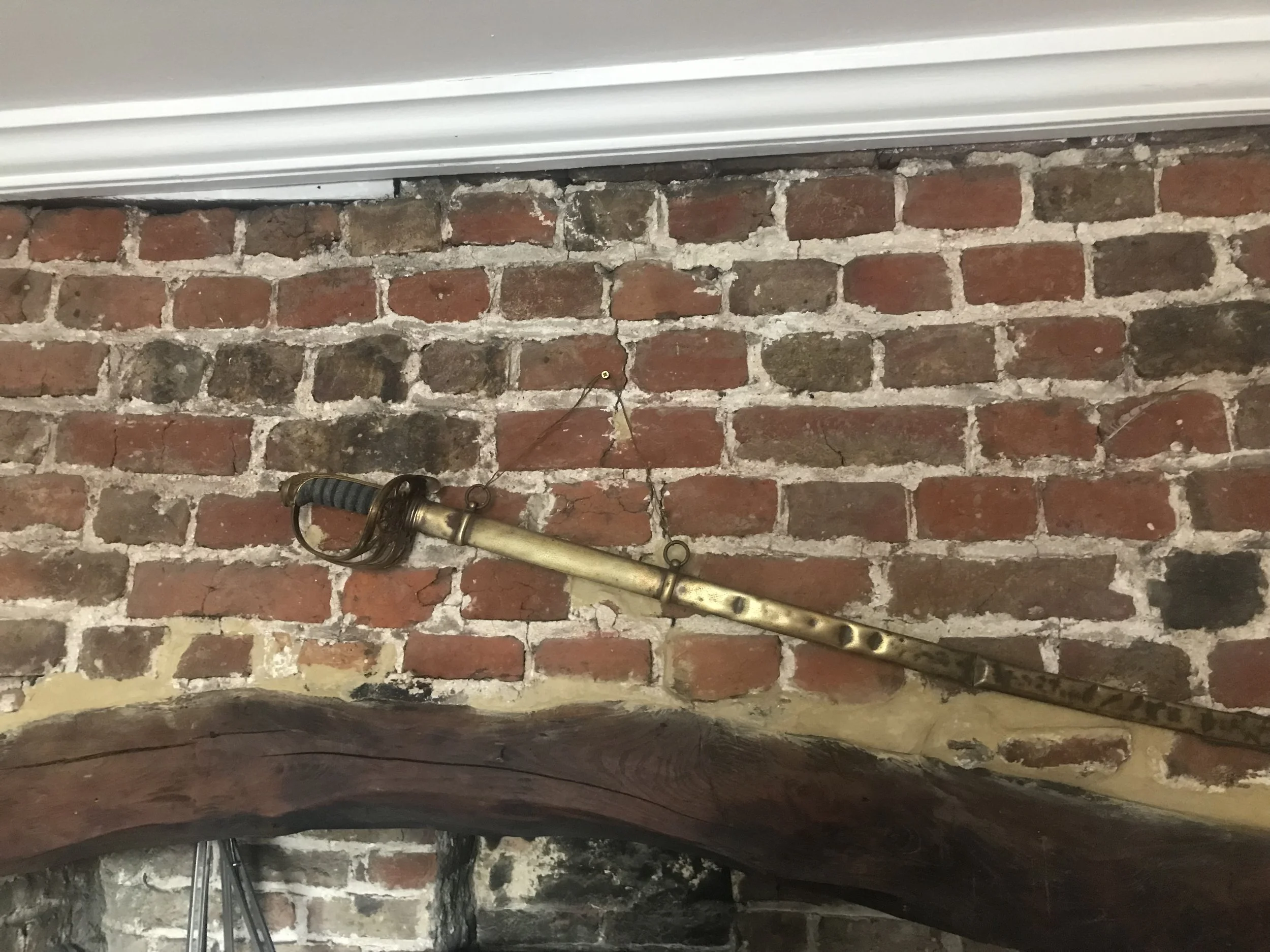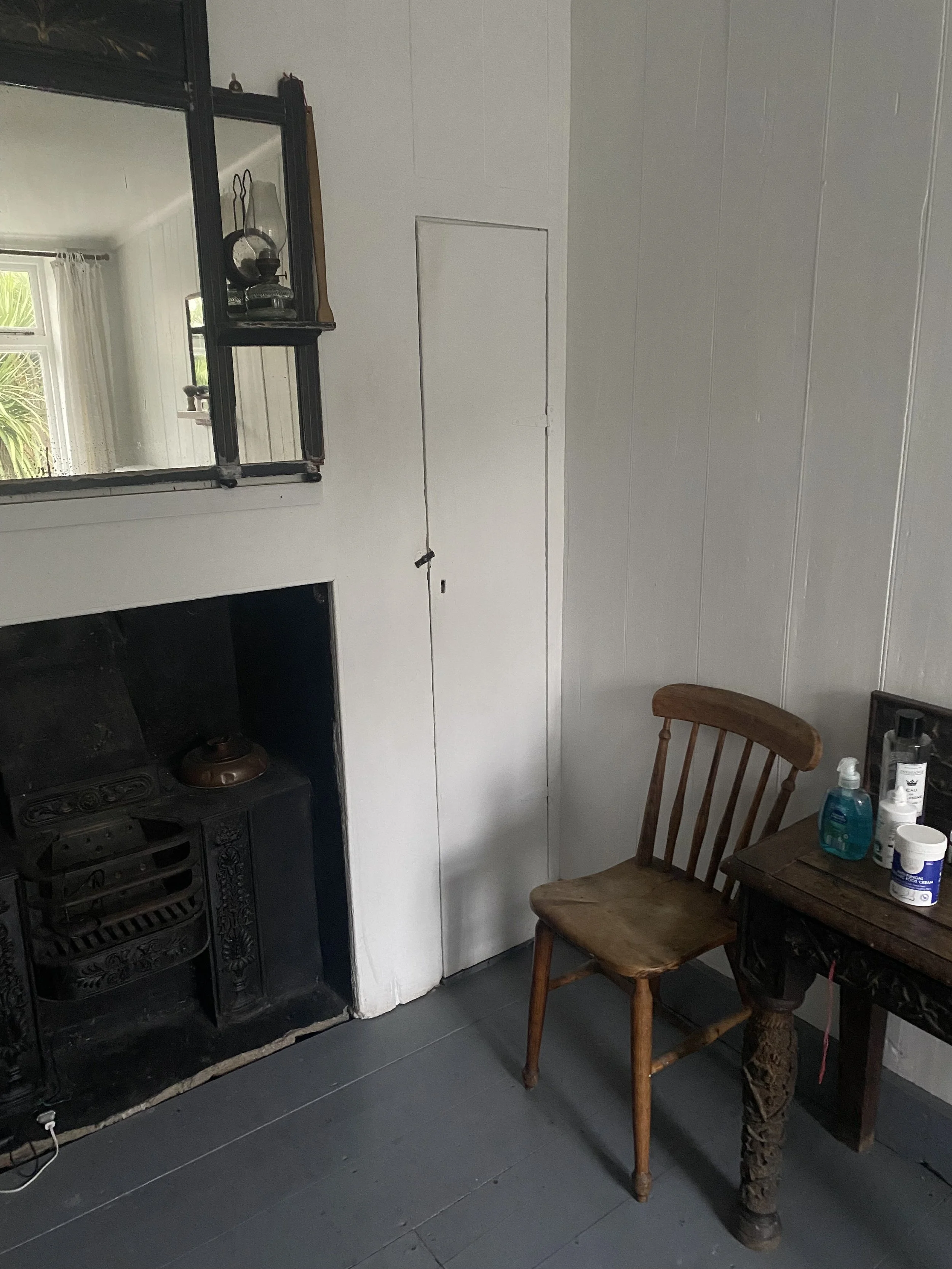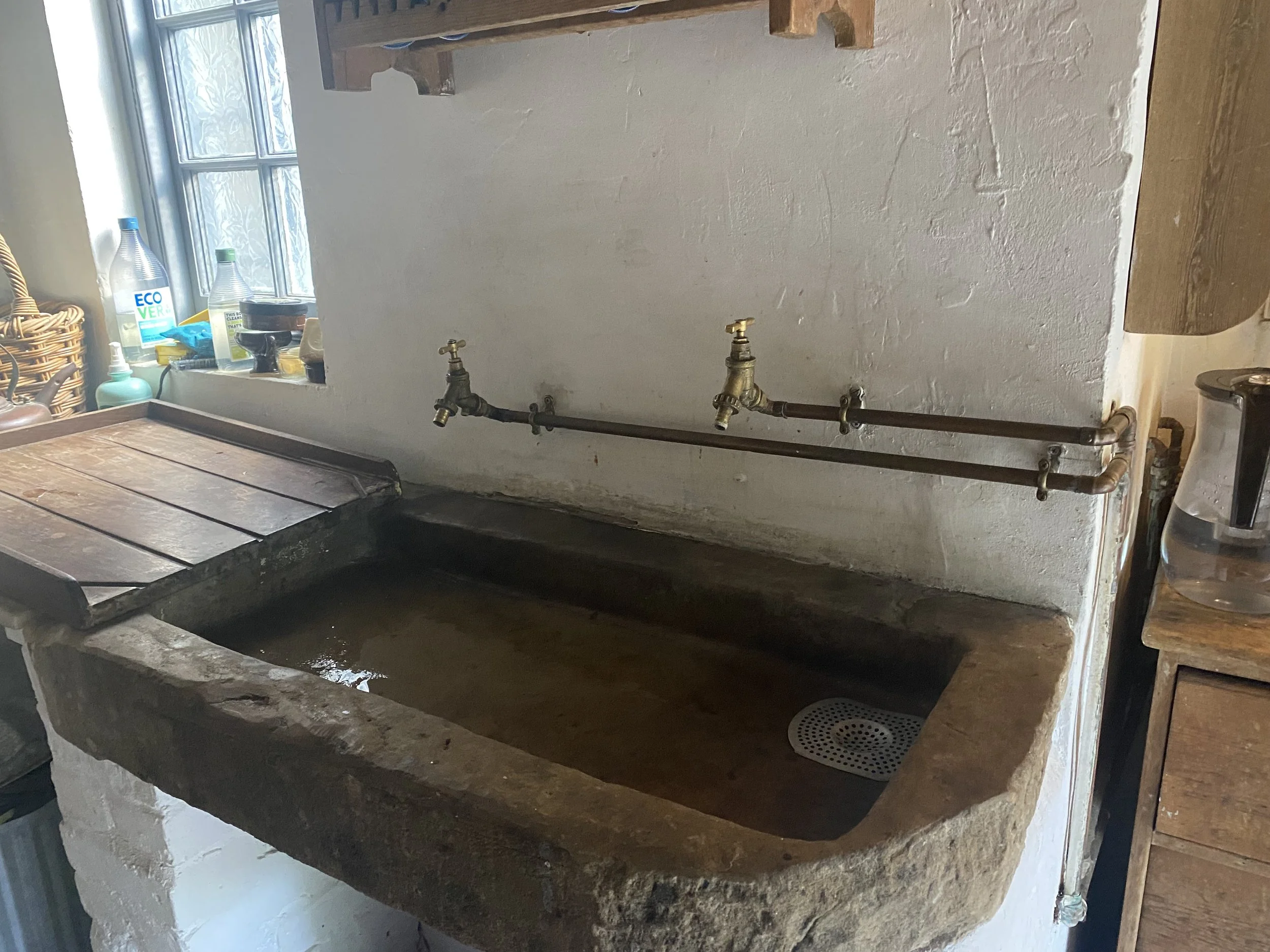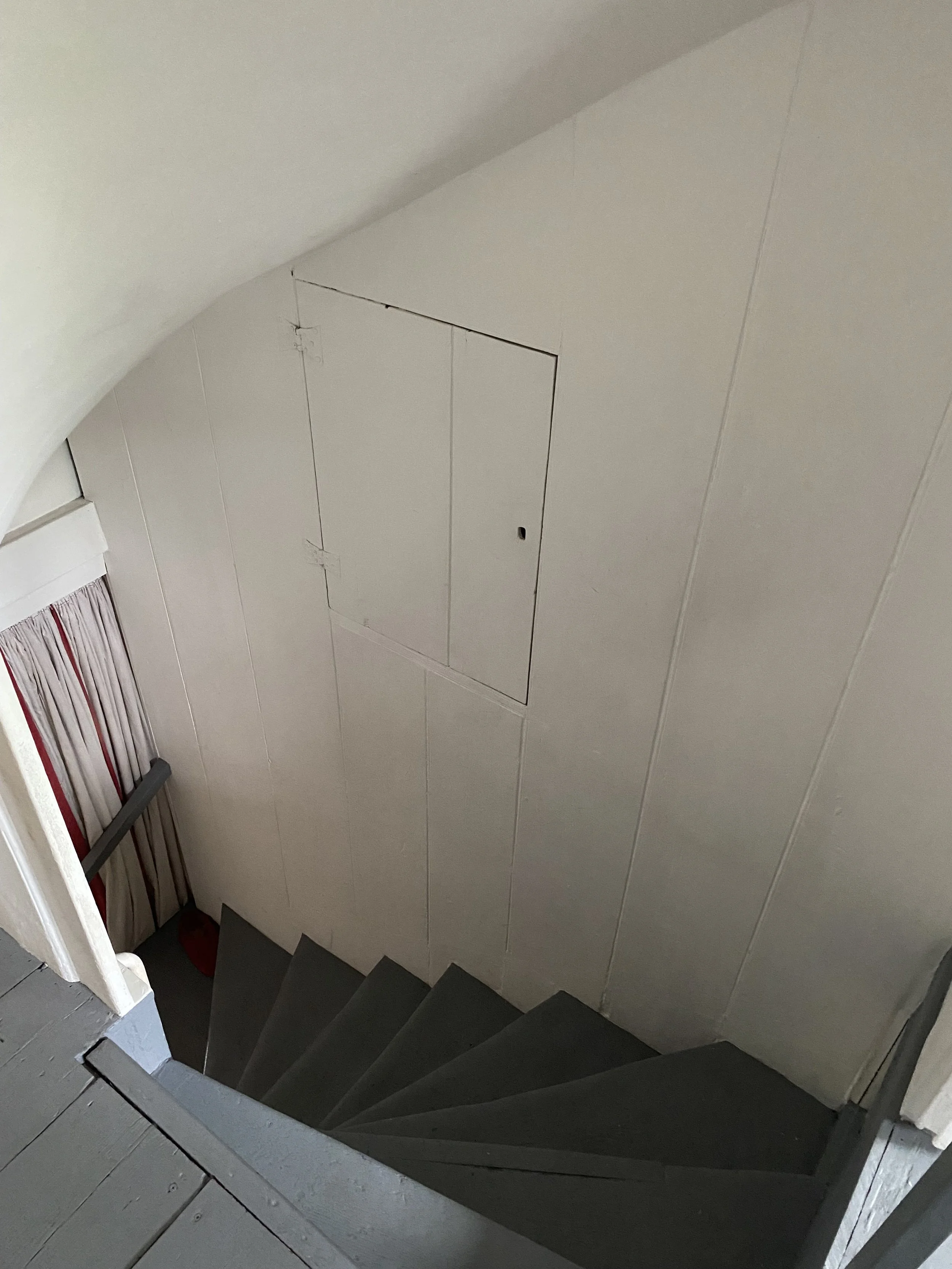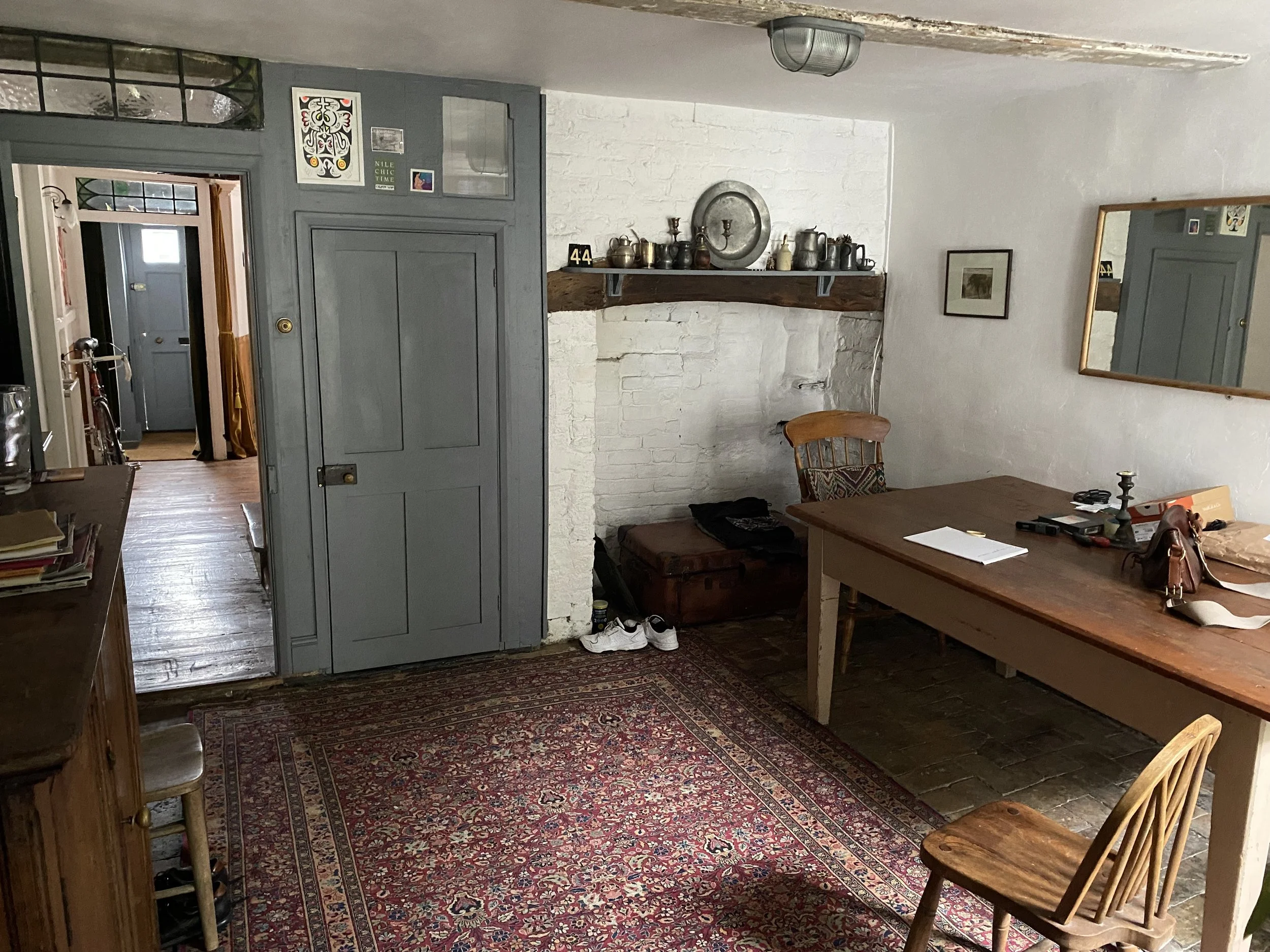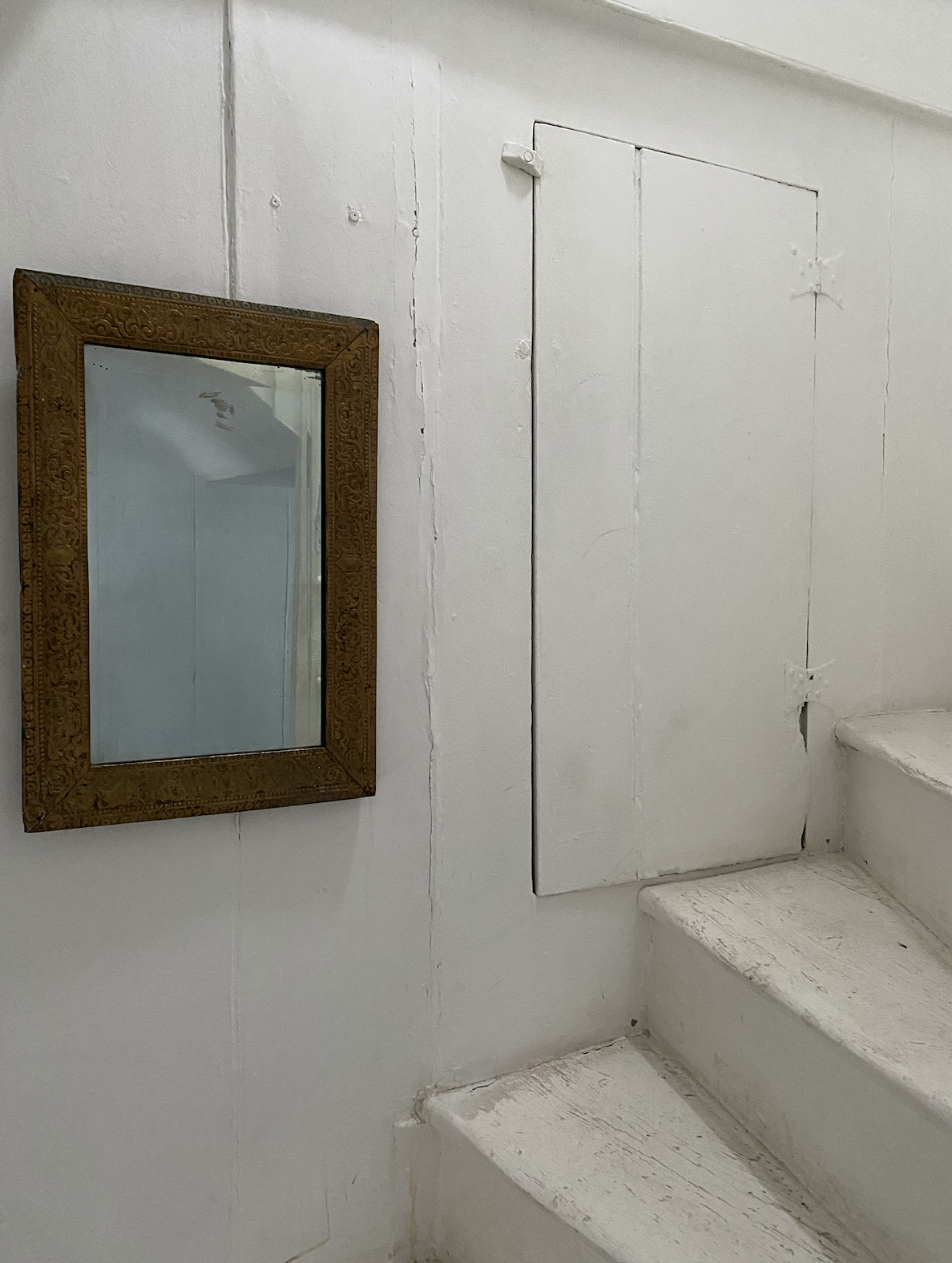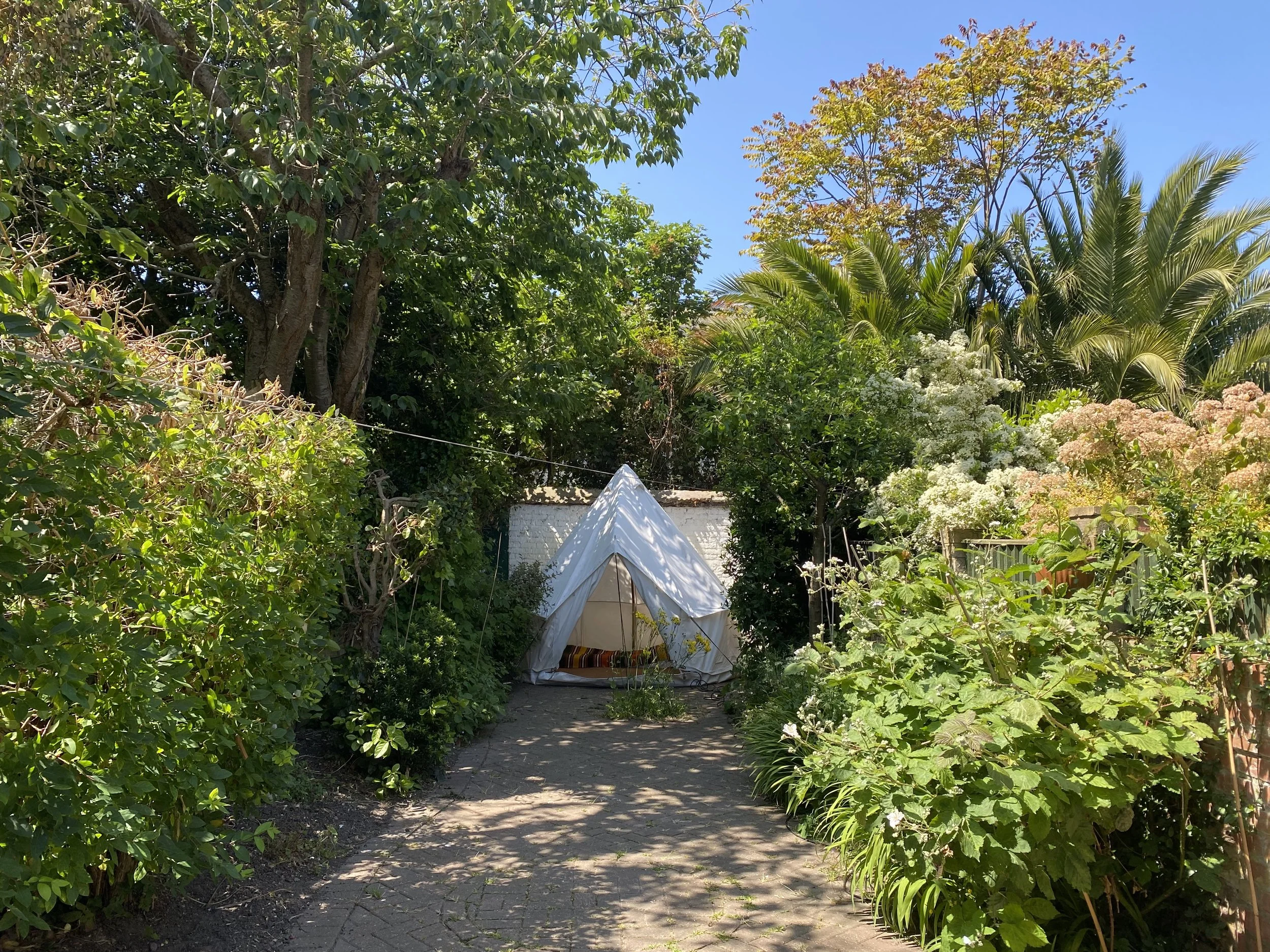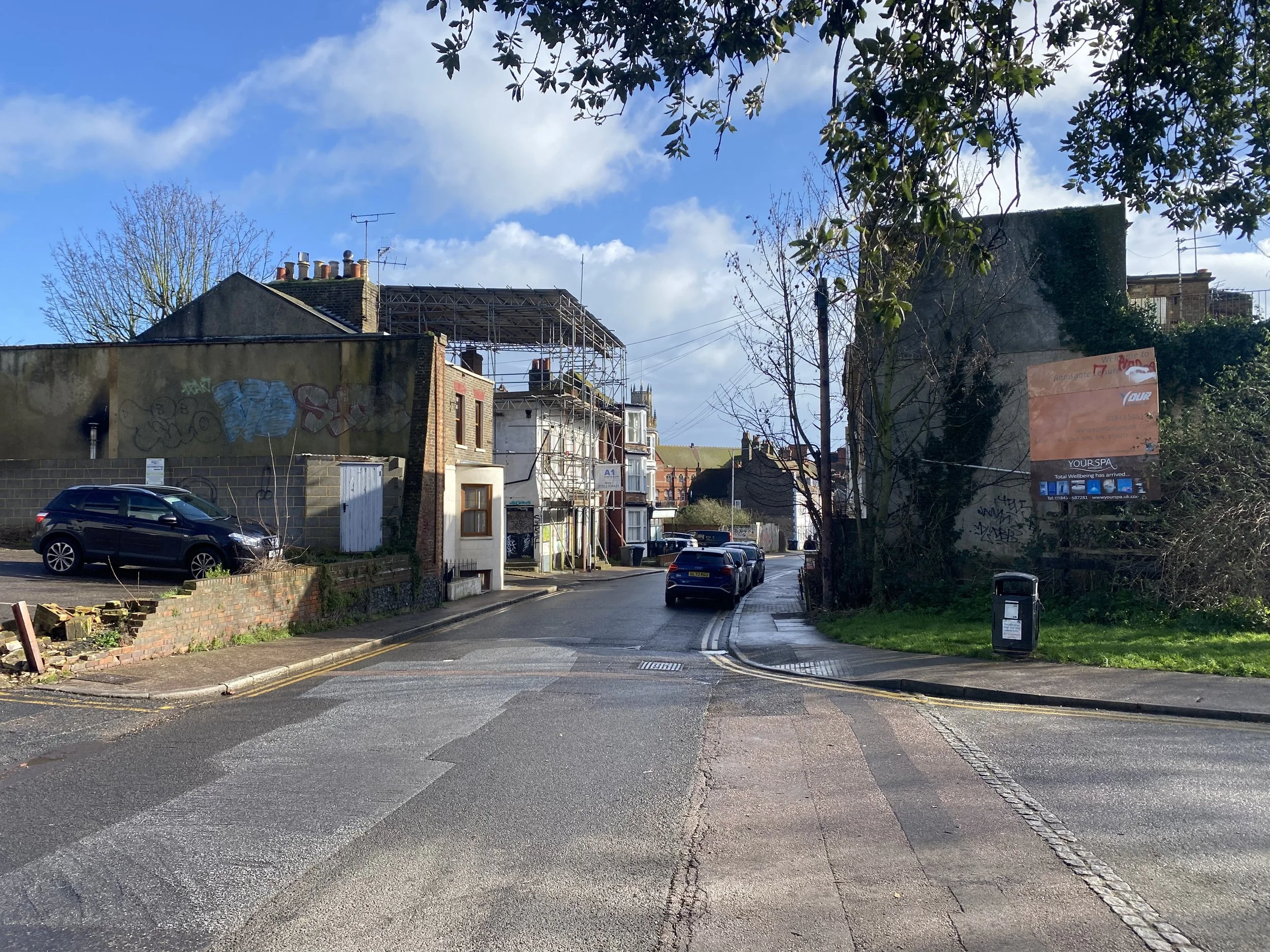Welcome to the Ramsgate Historic Quarter Scheme
Our mission is to conserve our historic buildings, to improve the environment for residents and to encourage visitors
This house has similar fenestration to Captain Abbott’s house next door. It was converted to shops and later extended for housing.
The Oddfellows Hall (picture left) is a Dutch Gable property refaced in the 1920s. Opposite stands the once-famous Spread Eagle coaching inn.
The Ramsgate Historic Quarter is the oldest part of town. Like the Latin Quarter in Paris or Ramsgate’s own Artisan Quarter, it is distinctive in terms of its architecture and its part of the story of the development of the town from a fishing village to one of Europe’s most fashionable and affluent resorts….
Before Ramsgate became a resort town, it was a busy seaport trading as far away as Norway, Russia and New England. The sea captains and merchants built their houses on the hill overlooking the harbour and they named it Westminster, not only because it was on the road heading west but because of the quality of its architecture.
Another early 18th-century mansion Monkton House was the town’s Employment Exchange before being converted to flats.
Independent shops are returning to the area like this gallery and jewellery maker next door to Chatham House Grammar School.
The end of the Dutch Gable row and the Priest’s House which has been occupied by the same family for generations and has a wealth of original features.
The Duke of Wellington’s headquarters during the Napoleonic wars was here in Chatham Place.
The John Lewis plan of Ramsgate 1735 dedicated to ‘Captain Thomas Abbott, Captain William Spencer and the Gentlemen of Ramsgate’.
Refaced in the Victorian era, the former Sylvian Hotel on the upper high street dates from the late 17th century and is one of the town’s oldest buildings.
GII* Townley House was designed by architect Mary Townley at the end of the 18th century, it hosted grand receptions for the great and the good.
After playing a pivotal role in the defeat of Napoleon, England had an appetite to celebrate its new position on the international stage. Favoured by the young Princess Victoria and her mother, the Duchess of Kent, Ramsgate attracted the socialites, artists and politicians of the day: Karl Marx, Samuel Taylor Coleridge, Wilkie Collins and Vincent Van Gogh, to name a few. Some splendid architecture from that period remains today and the town boasts more listed buildings than the city of Bath.
If the scheme is as well received as we hope it will grow and incorporate other parts of the Ramsgate Conservation area. In addition to historic building conservation, we hope to address the negative impact of cars, combat littering and fly-tipping, and reintroduce heritage lighting to demarcate and highlight that you are in a historic area.
Heritage Lighting and its impact on the conservation area
Our scheme began with the reintroduction of heritage lighting on Paradise. It soon became evident that there was a reduction of speeding, littering and fly-tipping and an increase in neighbourhood pride.
Heritage lighting is the most visible clue that you are in a historic area. We soon realised that adopting lanterns throughout the scheme would be an important step in changing the perceived value of our cultural heritage for residents and visitors alike.
Traffic and Speeding
Ramsgate Town Council have proposed a 20 MPH limit within the conservation area but wary of the cost Kent County Council is being slow to impose the restrictions that other towns take for granted.
At peak times cars contribute to noise and air pollution as well as being a danger to pedestrians’ physical and mental health.
Sensitive town planning is an essential component of the quality of life for residents. Plans for an industrial estate at Bristol Place will mean many more commercial vehicles using roads designed for the horse and cart.
Cars regularly speed up and down the high street and with pavements made narrower by road widening in the 20th century pedestrian injuries are a regular occurrence.
Access to the supermarkets favours cars over pedestrians. Customers arriving by car tend to spend more.
Building materials during the pre-industrial period were produced locally, including bricks, clay tiles and lime. Flint was a common practical and decorative feature. Whilst the wealthier were using brick, the carpenters dominated the building trade, and many were themselves shipwrights. (Archaeologia Cantiana 1973)
Increasingly, the importance of using breathable materials like lime mortar on historic buildings avoids the damp issues associated with impermeable modern cement.
With so many historic buildings in the town, there is an urgent need for historic building skills. Thus, not only will there be more job creation but also a boost to the visitor economy in this heritage town.
Buildings at Risk
The Spread Eagle
The Eagle is an early 18th-century coaching inn located at the entrance to the historic quarter. Since a developer was granted planning to sell off the car park for housing in 2009, the building has remained empty and today, without a roof, it is ‘At Risk’.
Virtually all planning applications since closure have been for residential units. Still, communities need public buildings, and the Eagle might better serve the area by offering food and accommodation as it did for two centuries.
We are looking for a building to house a Heritage Building Skills School.
In this way, buildings can be saved and restored whilst nurturing the essential traditional skills that any heritage town needs.
Before the era of steam power Ramsgate was accessed by land via the Stage Coach service running between London and Dover.
The Eagle is waiting for its next incarnation
The flint and brick stable block features an ingenious 18th century air- conditioning system
Its whats on the inside that counts
Despite three centuries of modernisation many of the houses retain original features including doors, windows, floorboards and built in cupboards.
Three of the houses in Paradise share a ship’s mast that holds up the first floor of the properties
During the national Heritage Open Days in September, some of these houses will be open to the public.
The entrance to Ramsgate Historic Quarter
We have commissioned a welcome sign by a local traditional sign writer, which will be located on the building at the entrance to the Historic Quarter coming from the direction of the train station.
A bird’s eye view of the Ramsgate Historic Quarter. The undisputed domain of the ever-present seagulls
The Ramsgate Historic Quarter mural was inspired by the ghost signs sometimes visible on old shops. These have recently gained the attention of Historic England which proposes to grant the best listed status.
A ghost sign in the town of Blyth, Northumberland featured in the Historic England Ghost Sign Directory.
I wonder what the Iron Duke would think about the Farley’s sign.
The old town bar was the entrance to the Historic Quarter from the northwest. In more dangerous times this was manned by marines stationed at the nearby arsenal which was located in what is today the Asda carpark.
The Historic Quarter welcomes visitors arriving at the station en route to the beaches and the harbour.
Not a ghost sign exactly but a ghost outline of a Dutch gable house which once lined the street.
The Captain’s Garden
The loss of green spaces in our towns and cities has contributed to a growing sense of isolation and other mental health issues. Today, with the dominance of traffic on the wane, these places can be reclaimed for the community.
Our ambition is to create a garden in this redundant space at the entrance to the leisure centre. An information board will tell the story of one of the 18th-century characters, Captain Abbott, whose house stood on this site.
When the sea captains lived here they were surrounded by green spaces, orchards, nurseries and market gardens. Corn was produced in the windmills dotted around the town and there were pigs and poultry roaming the streets.
Amanda King is a teacher and garden designer who lives in the Historic Quarter.
The Ramsgate Historic Quarter and Sustainability
In 2019 Thanet District Council announced their first environmental action plan in response to the current climate crisis.
But will we really be able to make the necessary sacrifices to save our town and ourselves?
Naturally, people are reluctant to give up the convenience of their cars, gas-heated homes and plastic-wrapped food.
In preindustrial times life was sustainable, much of what people needed was sourced locally, even the rich had relatively few clothes and recycling was a given.
In a sense, heritage is not so much about the past as the future. In looking at the development of this historic area, lessons can be drawn about how the value of heritage and a sustainable planning policy can contribute to the town's economy as well as a better quality of life for its residents moving into the next generation.
Historic Building Conservation
Historic Area Regeneration
The Heritage Lighting Scheme
20 MPH is Plenty campaign
Captain Abbotts Garden
Heritage Building Skills School
Support any of the RHQ initiatives by making a donation or by getting actively involved.
Sign up to be the first to know about our events.








